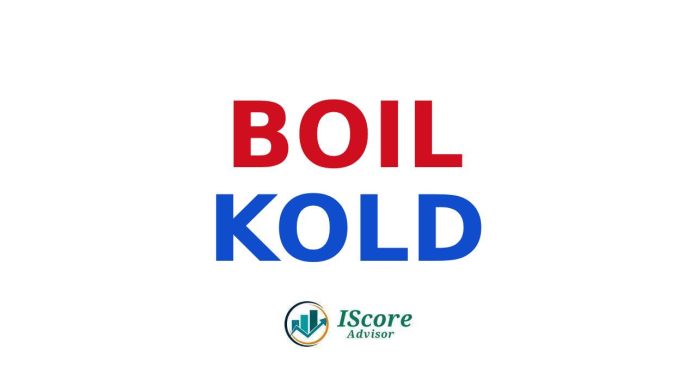What is BOIL ETF?
As its name indicates, BOIL ETF (ProShares Ultra Bloomberg Natural Gas ETF) is an exchange-traded fund that tracks Bloomberg Natural Gas Subindex by holding natural gas futures contracts. It aims to deliver twice (2x) the daily performance of the subindex, before fees and expenses.
As it is a leveraged ETF that magnifies the returns of the underlying index, it can offer prospect of enhanced returns, but equally exposing investors to amplified losses.
Bloomberg Natural Gas Subindex. Source: FT.com
According to data from ProShares website, the daily changes in BOIL’s net asset value during the second quarter of 2024 exhibited a near-perfect correlation of 0.99 with its benchmark index. However, the alignment comes with heightened risk, as indicated by a beta of 2.00, signifying that BOIL’s volatility is double that of the index.
Source: ProShares
Why BOIL ETF keep going down?
BOIL is designed for investors with a higher risk tolerance and is best suited for short-term trading. It is not recommended as a buy-and-hold investment due to the risks associated with leverage.
The ETF has an expense ratio of 0.95%, which investors should consider when evaluating investing into it.
Leveraged ETFs like BOIL and UNG (United States Natural Gas Fund LP) are subject to two forms of decay: volatility decay and roll decay.
Volatility decay
We’ve addressed volatility decay in several discussions on leveraged ETFs, notably in our analysis of TMF, where we explored the impact of leverage decay.
The following example illustrates how leveraged ETFs can experience erosion over time due to daily compounding, even when the underlying index returns to its original value.
Let’s break it down: assume that we have a 2x leveraged ETF starts with original price of $100.
Day 1:
The underlying index increases by 10%, moving from 100 to 110.
The 2x ETF designed to magnify the daily return by 200%, increases by 20%, rising from 100 to 120.
Day 2:
The index then decreases by 9.09%, dropping from 110 back to 100.
The 2x ETF, which again doubles the daily movement (not pure gains), decreased by 18.18%, falling from 120 to 98.18.
From only two-day data, it highlights the impact of daily compounding on leveraged ETFs, where the intended multiple of returns does not hold over longer periods of time, particularly in volatile markets.
In a much longer term, if the underlying asset remains volatile, the leveraged ETFs would be deviated from 2x (or 3x) with erosion, with lower than 2x (or 3x) returns, especially after accounting for expenses.
In summary, while leverage is effective on a daily basis, the compounding effects of daily resets cause leveraged ETFs to deviate form a straightforward 2x (or 3x as indicated) relationship over longer periods. This often results in underperformance relative to the anticipated outcome.
Roll decay
Roll decay occurs when an ETF sells expiring futures contracts at a lower price and buys longer-term contracts at a higher price, a frequent scenario in a contango markets where future prices exceed current prices.
Let’s say an ETF is tracking the price of crude oil, and it holds futures contracts.
Intial position:
Current month (Expiring contract): the ETF holds 1,000 barrels of crude oil in futures contracts expiring in one month, priced at $60 per barrel.
Next month (New contract): the price for futures contracts expiriing in two months is $65 per barrel.
Rolling process:
As the current month contract nears expiration, the ETF must sell these contracts at the market price, which is $60 per barrel.
The ETF then buys new contracts expiring in two months at $65 per barrel.
Cost of rolling:
The ETF sells the expiring contract for $60 per barrel. It buys the new contract at $65 per barrel.
The ETF effectively loses $5 per barrel in this rolling process because it has to buy more expensive contracts after selling the cheaper expiring ones.
If the ETF holds contracts for 1,000 barrels, the roll decay would result in a loss of $5,000 ($5/barrel * 1,000 barrels), simply from the rolling process, even if the actual price of the oil doesn’t change.
For investors holding such an ETF over the long term, these small losses add up, leading to a significant underperformance compared to the expected returns if only the spot price were considered.
There are three primary scenarios for changes in futures contract prices:
Contango (Futures Premium): Futures prices steadily rise over time, a pattern that typically emerges when the market anticipates higher future prices compared to current spot prices, often driven by storage costs or expected demand growth.
Backwardation (Futures Discount): Futures prices gradually decline over time, usually reflecting market expectations that future prices will fall below current spot prices, often due to anticipated increases in supply or decreased in demand.
Normal market (No Changes): Futures prices experience modest increases over time, generally aligning with movements in the spot price.
Among the three, contango is a more common scenario for BOIL and other commodity-based ETFs, particularly those tied to natural gas.
A key driver of contango is the cost of storing the underlying commodity. In the case of natural gas, storage costs can be substantial, leading to higher futures prices for longer-dated contracts as these costs are factored in.
When traders purchase futures contracts, they often do so by borrowing funds. The cost of the borrowing (interest rates) along with other carrying costs, such as insurance and storage, are embedded in the future prices, driving them higher and continuing to contango.
Combining all the factors mentioned above, the price of BOIL keeps going down.
Will BOIL price go to zero?
Yes, the BOIL ETF can theoretically go to zero, although it is not highly likely in the immediate future.
Taking into account the decay factors mentioned earlier, the price of BOIL can gradually decline, especially during periods of heightened volatility when significant losses are more likely. Extreme circumstances such as unfavorable geopolitical events, shifts in energy policies, or technical advancements that diminish natural gas demand, could sustain low prices. In the event of a sharp decline, the value of the ETF could theoretically be driven to zero.
However, for ETFs like BOIL, while the value can theoretically approach zero, fund managers often implement reverse stock splits to maintain a higher share price, preventing the ETF from reaching zero.
ProShares would announce the reverse split and provide details such as the split ratio (e.g. 1-for-10, 1-for-4, etc.), and the effective date. On the date, the brokers would automatically adjust the number of shares investors hold according to the split ratio.
Here is an example:
Before the split:
Number of shares: 1,000
Price per share: $0.01
Total investment value: 1,000 shares * $0.01 = $10
After 1-for-10 reverse split:
Number of shares: 100
Price per share: $0.1
Total investment value: 1,000 shares * $0.1 = $10
While the total share value remains the same, the total number of shares would decrease, reducing liquidity and making it harder to buy or sell large amounts without affecting the market price. Sometimes, reverse stock splits can be viewed negatively by the market, as they are undertaken by securities that are struggling. But in the case of ETFs like BOIL, it is a routine part of managing the fund’s pricing and are not necessarily a negative signal.
Is BOIL ETF a buy?
Although BOIL’s price tends to decline over the long term, it does not mean that we cannot invest in it.
It experiences sharp fluctuations on a daily basis. That means there could be outstanding growth in some days, or even continuous growth in a period of time.
Daily returns from July 16, 2024 to August 13, 2024. Source: ProShares
Whille leveraged ETFs are generally viewed as high-risk investment with the potential for significant losses, they can also deliver substantial returns under favorable conditions. For instance, in a strong bullish market, leveraged ETFs can dramatically outperform their unleveraged counterparts.
In a continual growing period of time, the returns of 2x leveraged ETF would surpassed 2x, as shown in following chart, with examples of regular ETF compared to 2x leveraged ETF:
That said, predicting whether the subindex will grow consistently, or even maintain its growth over several days, is highly challenging.
BOIL vs UNG vs KOLD
At last, as mentioned, there is an alternative ETF called UNG, which was structured to mirror the daily movements of natural gas, with its benchmark being the natural gas futures contract traded on the NYMEX.
UNG outperformed BOIL in the last decade with higher returns in most of the time frames and a much lower beta and volatility.
Source: VettaFi
Besides, there is also another ETF product called KOLD (ProShares UltraShort Bloomberg Natural Gas) that takes a bearish position of natural gas prices, serving as the inverse version of BOIL.
In the short term, KOLD and BOIL exhibit an inverse relationship. However, over the longer term, KOLD, like BOIL, is an leveraged ETF subject to decay issues, leading to gradual price decline as well.
Source: Tikeron.com
Conclusion
In brief, the leveraged ETFs like BOIL, UNG or KOLD are best used as short-term trading tools rather than long-term investments.
The volatility of these products can lead to significant gains in a short period, but they are not suitable for holding over extended periods due to the risk of decay and the volatile nature of futures contracts market of natural gas.
That’s why it is hard to tell whether we should invest it or not in a long period of time, but we have to study well the natural gas market along with geopolitical events, to judge it is boiling or colding.
—
Iscore Advisor:
The content in any of the Iscoreadvisor.com webpages shall not be construed as financial advice and may be outdated or inaccurate; it is your responsibility to verify all information.

